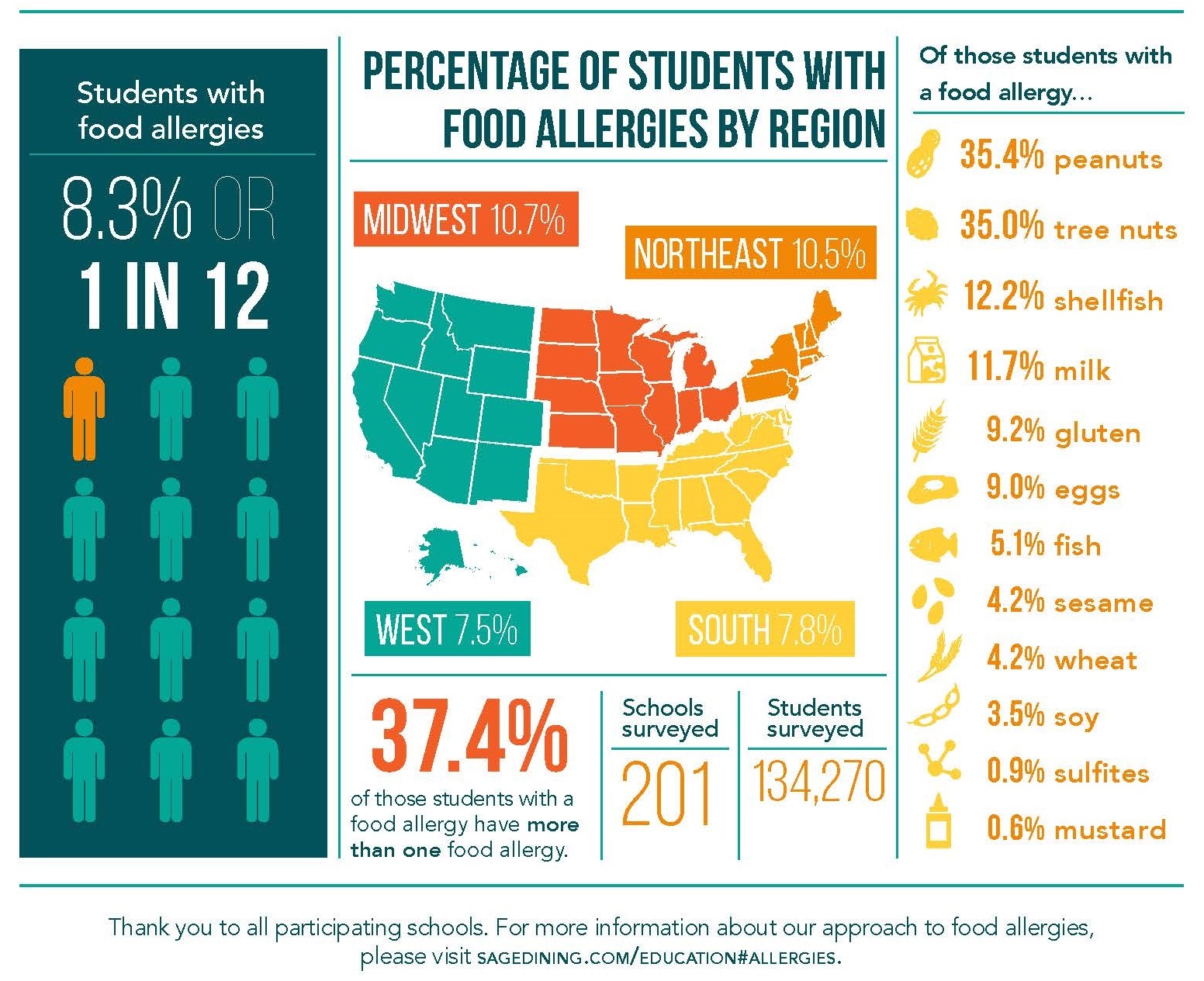As a dining service that primarily serves children ages 5-18 in approximately 275 independent schools in North American states and provinces, including British Columbia, we know firsthand about the severity, prevalence, and rising incidences of food allergies in recent years. Feeding students with food allergies, some of whom may be navigating food choices independently for the first time, is a tremendous responsibility that we take very seriously.
We conduct an annual client survey to learn more about allergies to the following 12 foods: egg, fish, gluten, milk, mustard, peanuts, sesame, shellfish, soy, sulfites, tree nuts, and wheat. We recognize this list of 12 allergens (more than the eight recognized by law in the U.S.), because we serve venues in Canada, where mustard, sulfites, gluten, and sesame are also recognized as major allergens. Each year, we receive approximately 200 surveys, representing approximately 130,000-140,000 students.
We’re committed to providing a safe dining environment for students with food allergies. Knowing which allergies are most prevalent enables our Managers and Registered Dietitians to build recipes and menus to accommodate community members with food allergies. It also allows us to see trends, such as a rise in sesame allergies in the past few years.
Our approach to food allergies values both safety and inclusivity in dining communities that foster community. From our comprehensive ingredient and menu review to our online allergen filter and open-kitchen policy, we ensure students with food allergies have confidence in the information they have about their meals and in the environment in which they’re dining.
Here are the results from the 2019-20 study:









